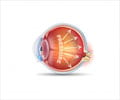The way healthcare professionals measure eye pressure may be changed following results from a recent scientific study in the U.K.

According to the authors, researchers have long recognized that the clinical methods of assessing eye pressure have suffered from some inaccuracies, specifically as a consequence of the physical properties of the cornea. The EPIC-Norfolk study presents the first large-scale population-based measures of corneal biomechanics.
"Previously, a rather crude measure -- central corneal thickness -- was used as an index of corneal biomechanics," said author Paul J. Foster, MD, PhD, FRCS(Ed), of the University College London Institute of Ophthalmology, "We used a device which generates measures of corneal biomechanics in conjunction with IOP and attempts to 'correct' IOP for corneal physical properties."
Recruited between 1993 and 1997, the EPIC-Norfolk cohort was made up of approximately 25,000 predominantly Caucasian men and women aged 40 to 79 living in eastern England. From 2006 to 2010, a health examination was conducted to objectively assess various physical, cognitive and ocular characteristics of participants. The research team used a non-contact tonometer, the Ocular Response Analyzer, to obtain eye pressure and corneal biomechanical data from 4,184 study participants, now aged 48 to 91 years.
"The accurate measurements of IOP and interpretation of the results in terms of what is seen in the 'normal' population are cardinal pieces of information when healthcare professionals conduct routine eye examinations," said Foster. "We will be using our results to assess the validity of current glaucoma treatment guidelines, with respect to levels of risk attributed to specific levels of IOP."
Advertisement













